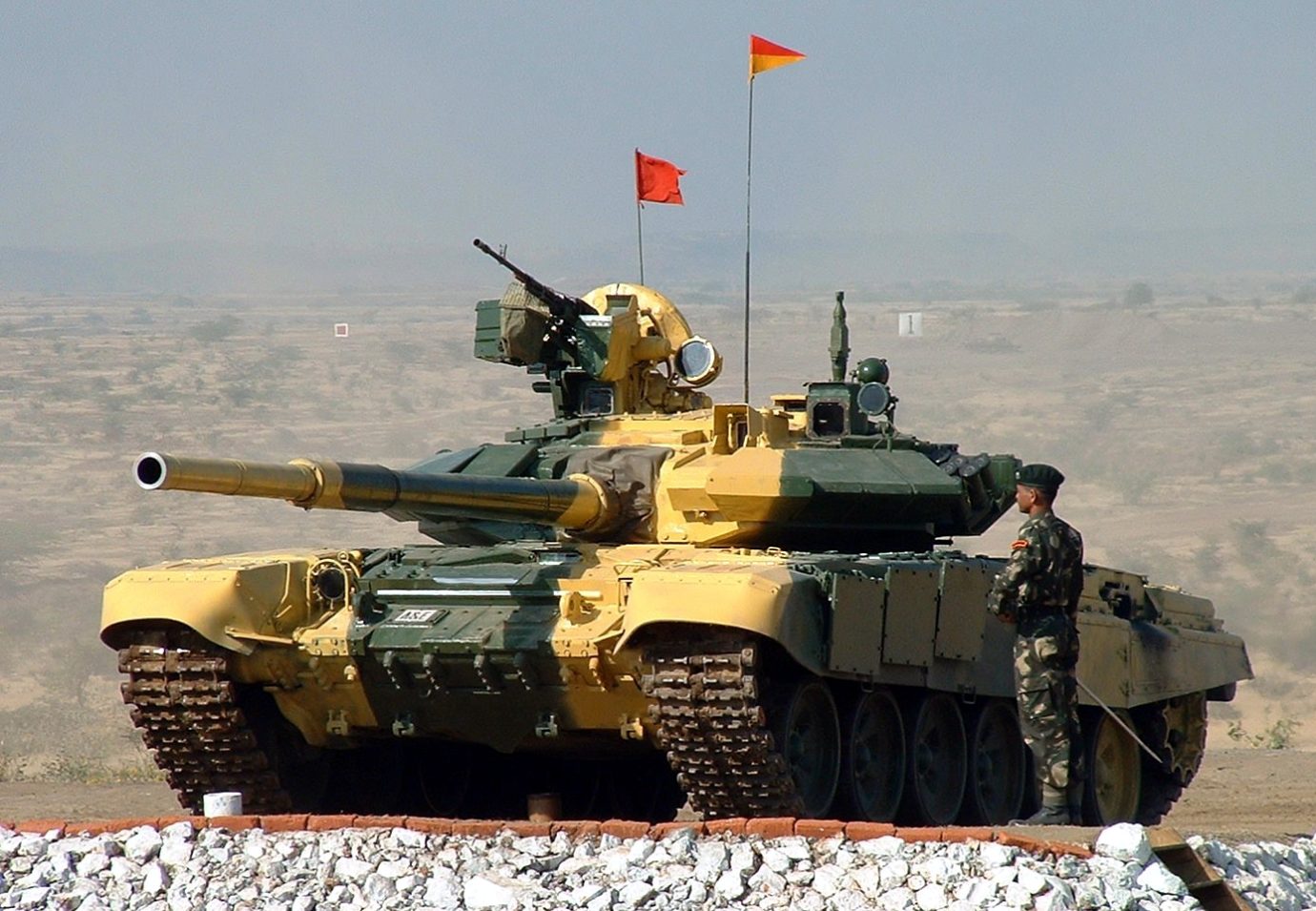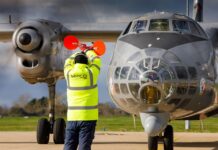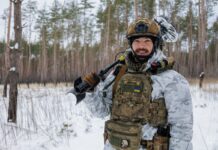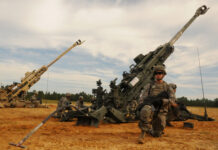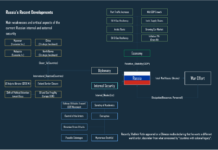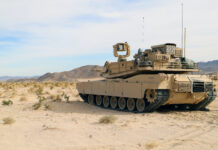The central element of Russian ground forces operations is the Battalion Tactical Group (BTG). In the ongoing war in Ukraine, BTGs have displayed a disastrous performance. What went wrong?
The Russian invasion of Ukraine in February this year was supposed to be a military operation leading to a rapid conclusion. Ukrainian command and control capabilities were expected to be disrupted and/or destroyed. Consequently, Ukrainian defensive responses were likely to be uncoordinated. Russian airmobile operations into the strategic depth of Ukraine and, where appropriate, amphibious operations would further diminish Ukrainian capabilities for resistance. Ground forces operations would then rapidly penetrate into strategic depth, utilising their firepower and mobility to sweep aside opposing forces. This all, however, failed to materialise. What went wrong?
What is the Battalion Tactical Group?
The central element of Russian ground forces operations is the Battalion Tactical Group (BTG), which is the product of a process of reform in the Russian Army. To understand what the BTG is and what it is supposed to do, we need to look at the emergence of the modern Russian Army and the challenges it faced, which eventually led to military reform.
It all starts with the collapse of the Soviet Union at the end of 1991, although to be fair the institutional collapse of this once great superpower had seemingly become inevitable in the late 1980s. There were attempts to keep the Soviet military together under the auspices of the Commonwealth of Independent States (CIS), but this was not acceptable to successor states that were emerging from the Soviet Union. As a result, the Russian government established a Ministry of Defence in May 1992, creating Russian ground, air and naval forces.
A Difficult Birth
Russia’s military capabilities were born out of the wreckage of the Soviet military. In the early 1990s, Soviet troops and equipment were being pulled out from the former East Germany and Czechoslovakia, Poland, the Baltic States and Hungary. Those destined for Russia were spread out across military districts all over the country. When these troops returned to the crumbling Soviet Union, there were not enough barracks and other facilities to accommodate all of them. In the midst of all this, corruption became a major problem. Equipment of all types just disappeared, as did stores such as fuel and food. Beyond that, there was another major problem to confront and that was money. The Russian economy was in a shambolic state and the government just did not have the funds to support its military.
Obviously, something needed to be done. This led to the first military reform effort in Russia, which failed to achieve much in the way of reform. The problem was that many senior officers were products of the Soviet system and could not cope with the fact that the world had changed. They tried to preserve Soviet structures, something that was impossible in the Russia of the 1990s, and they also failed to recognise that their own forces were suffering from bad morale and poor motivation, as well as being deficient in terms of training and equipment. It became plain that the Russian Army was not the instrument its commanders believed it do be when military operations commenced in Chechnya in December 1994.
Disaster in Chechnya
It was supposed to be a rapid operation to restore ‘order’ in Chechnya. It was expected to be over in a matter of hours with the capture of the Chechen capital, Grozny. Instead, it turned into a disaster that exposed the weaknesses of the Russian Army, including the loss of a Motor Rifle Brigade sent into Grozny. Fighting in Chechnya ended in August 1996 with a ceasefire. Then in 1999, what became known as the Second Chechen war broke out, subsequently spreading across the North Caucasus, with the conflict continuing until 2009. Combat performance did improve in the second Chechen conflict, but plainly, there had to be further reforms to modernise the Russian Army.
Military Reform
In reality, for all of the talk about military reform and the need to develop a new generation of advanced weapons, the crux of the matter was that the Russian economy could not afford to support the superpower pretensions of the Russian leadership. First and foremost, there was the requirement to sustain the strategic nuclear forces, which demanded tremendous investments. It was necessary to consider the army, the air force and the navy, all of whom required major modernisation funding. On top of that, one had to take into account that defence had been significantly underfunded from the foundation of the new Russian state in 1992 through to the mid-2000s. Effectively that amounted to some 15 years of underfunding that had to be repaired before modernisation programmes could commence. There were even worse issues to resolve, and one critical task was to put a halt to corruption and other criminal activity in the military, which had been a serious and constant problem.
When the Putin era commenced in 1999, the imperatives were to restore the power of the state, while being intolerant of dissent, and to regularise the economy to start raising living standards. These objectives were achieved. Initially the dynamic of the regime was power, but then an ideology emerged that was based on Russian nationalism and the desire to have the position of a world power formerly occupied by the Soviet Union. This justifies funding military modernisation and in turn allows Russia to dispute existing borders as it works towards becoming the dominant power within the borders of the former Soviet Union or perhaps even beyond. As such, this nationalist ideology is not conducive to strategic stability.
Military Structures
Historically Russia has always had large ground forces, whether it was Imperial Russia or the Soviet Union; the only way to achieve the desired force strength was through conscription. For the new Russia, conscription was and still continues to be problematic for a number of reasons. The first was demographic; birth rates in Russia declined dramatically and in consequence the number of military-age males also declined, thus reducing the number of available conscripts. For political reasons, the term of conscription was reduced to 12 months. How much training can be achieved in just 12 months and how useful will these soldiers be?
The solution to the conscription issue was the ‘contract soldier,’ who was a paid professional soldier and operated under much better conditions than conscripts. Another important effort was to create a proper NCO system in the military, something that had been lacking in the Soviet era. These were positive measures, but the fundamental issue was that the Russian ground force were ‘hollow,’ since you might have a division, but its personnel numbers were far below the required number.
The 2008 conflict with Georgia where Russia supported the establishment of two separatist enclaves in South Ossetia and Abkhazia, provided further evidence that Russian ground forces needed to be both modernised and reorganised. The objective was to build new generation formations with high levels of readiness, where the personnel were professional soldiers, and the new formations would have high levels of firepower and mobility, allowing them to have a decisive impact on the battlefield.
Initially the idea was to opt for a brigade-sized formation, but this solution proved impossible to implement, as the personnel were simply not available for a full-strength brigade solution. Instead, the idea was to keep the brigade as a parent formation and have manoeuvre units based on a mechanised infantry battalion with attachments to form a combined arms unit. In many respects, this is a battlegroup, something that had been used by both the Soviet and Russian Army as an expedient solution. Here though it is a formalised solution and is classified as the Battalion Tactical Group (BTG).
First BTG Deployment
During the first Russia-Ukraine conflict, from 2014 onwards, the BTG played a key role in Russian operations in eastern Ukraine. In the main, BTG-based operations were successful, although weaknesses with the overall concept did become apparent and there were occasions when Ukrainian forces took advantage of these weaknesses to inflict defeats on the BTG.
If one recalls this first conflict in eastern Ukraine, it is significant how little attention it received, despite the fact that it was very unexpected. As regards the conflict itself, first there was the seizure of the Crimea and then the establishment of separatist zones, with the intensity of ground combat increasing to the point when one US observer described it as the largest scale battles in Europe since the Second World War!
Central to this intense conflict was the BTG. The baseline organisation of the BTG is:
- three mechanised infantry companies
- one tank company
- one anti-tank company
- two (sometimes three) tube artillery batteries
- one MRL battery
- two air defence batteries
There is no consistency in terms of equipment between different BTGs, as the current conflict has demonstrated, for example, the tank company could be equipped with the following vehicle types:
- T-72B
- T-72B3
- T-72B3 Obr.2016
- T-80U
- T-80UK
- T-80UM2
- T-80BVM
- T-90A
It would appear that BTG equipment depends on what is available in the military district where it was raised, and this also accounts for differences observed in armour protection across tank types.
Artillery and Technology
In the first conflict, it became clear that Russian forces held an advantage in terms of tanks, as the T-72B3 and T-90 tanks had superior fire control, day/night optics and a higher performance gun compared to Ukrainian types. Perhaps more significant was the fact that the BTG had a firepower overmatch due to its organic tube artillery and MRL batteries. The BTG could also call on higher-level artillery assets as well, for instance the BM-30 SMERCH, a long-range (90 km) 300 mm calibre system with HE-F, submunition, top-attack, mine and thermobaric warhead options. According to post-conflict analysis, some 85 per cent of casualties in the first Russo-Ukraine conflict were caused by artillery.
These artillery assets could neutralise hostile positions on the battlefield, allowing the BTG to move through the enemy position and maintain a high tempo advance. An indication of the destructive level of Russian artillery can be seen from July 2014 when Ukrainian forces at Zelenopillya in the Donbas were hit with an MRL barrage from positions across the Russian border, when two Ukrainian mechanised battalions were destroyed in less than three minutes!
Maximising the ability of artillery to have a decisive operational impact requires a full picture of the battle area, rapid target detection and classification, the ability to quickly organise and perform a fire mission against the desired target, and then conduct a Battle Damage Assessment (BDA). In the first Russo-Ukraine conflict, the Russian forces were able to give their artillery the ability to provide this decisive operational impact through the extensive use of UAV systems.
The Russians also had a strategic UAV surveillance capability. This consisted of a high-altitude UAV covering the depth of Ukrainian dispositions from the front line through to rear areas, in addition to a medium-altitude UAV to provide target acquisition and fire correction in association with MRL batteries. This capability extended to a shorter-range UAV providing similar services for BM-21 MRL targeting and a small tactical-level quad-copter for BDA and close-in reconnaissance. In addition, counter-battery and ground surveillance radars were also widely deployed. All of this amounts to a very credible Intelligence, surveillance, target acquisition and reconnaissance (ISTAR) capability. In parallel, this demands a robust communications infrastructure for all of the component parts to work and it all did seem to work extremely well. Mention should also be made of the extensive use of electronic warfare systems by Russian forces, covering communications and radar jamming, as well as jamming of Ukrainian UAV control links. Electronic combat was a significant part of the Russian ground combat strategy.
What Went Wrong?
To summarise, in the first Russo-Ukrainian conflict from 2014 onwards, BTGs and supporting ISTAR and electronic combat assets proved to be a very potent offensive tool. In the current conflict, the BTG and its supporting assets have not had the same success, and this is due to a range of human, tactical and technical factors. Some of those issues could be resolved relatively easily, while others will require more time and significant investment to correct.
Maximising the potential of the BTG requires that the BTG commander, component company commanders and lower-level officers show initiative and react dynamically to the evolving battlefield situation. Instead, very little initiative has been shown, and command has reverted to the old-fashioned top-down structure. There also appears to have been a reversion to the more negative characteristics of the Soviet military system with rigid adherence to an operational plan, even when the reality of circumstances on the ground have made the plan invalid.
One problem for the BTG that became very clear during operations in 2014/2015 was a lack of infantry, though this was offset by the use of separatist forces in eastern Ukraine providing an extra infantry screen. However, nothing was done to correct the lack of infantry prior to the current conflict, with a contributing factor here being the lack of military personnel. The Russian Army has created large numbers of BTGs, as the lure of having large numbers of formations is difficult to resist, but it is plain that they should have focussed on fewer but better units instead. It is said that a BTG needs at least three more mechanised infantry companies, but it really needs more! Also required is an effective reconnaissance element; there have been so many images of Russian units blundering into ambushes, indicating a total lack of reconnaissance.
Even if more infantry and a real reconnaissance capability were to be added, that might not make much of a difference in the face of so many instances of inept tactical handling. Another weakness is that it is clear that little was done to prepare Russian troops for combat operations, explaining why they were going into Ukraine and what they were expected to do once they got there. It appears that many units did not anticipate combat, with their expectation being a road march to their assigned objectives in the face of zero resistance. When the reality proved different, the impact on morale is not difficult to gauge.
What is also clear is that the ISTAR, UAV and electronic warfare systems that had performed so well in the first conflict, failed to perform as expected in the current one.
Indeed, significant numbers of high-end electronic warfare systems have been captured by Ukrainian forces. One of the biggest failure points in the Russian campaign has been in terms of communications, notably the total lack of security in their networks and communications breakdowns leading to Russian troops using cell phones to communicate in the clear. To resolve these problems some high value Russian units, such as VDV airborne forces, have been equipped with the AURIGA secure voice and data satellite communications systems. The vast majority of Russian units continue with compromised communications systems though.
A Litany of Errors
It is very easy to point to the litany of errors by Russian commanders during the current conflict as the reason for them failing to reach their objectives. That is certainly true, but it is impossible to underestimate the contribution of the Ukrainian military and population in resisting the invasion. The Ukrainian military appears to have learnt a lot of lessons from the first conflict which it has acted upon. Furthermore, its capabilities and its resilience were an immense surprise to the invading forces. In all of this, we should not forget the terrible cost of this conflict to Ukraine and its people.
The second phase of this conflict is now upon us and will be centred in the Donbas region of eastern Ukraine. The Russian objective will be to secure and expand the Donetsk and Luhansk separatist enclaves, and to create a land corridor from Russian-controlled territory through to the Crimea. The supply situation in this operational area should be far more favourable to Russia, and they can base offensive systems in Russian territory where they will be safe from harm, whilst capable of intervention in the battle area in Ukraine. Sadly, this conflict looks set to continue until the Russian Government can declare a victory.
As for the BTGs, so many of these have suffered such losses as to make them combat ineffective and if they are to play a part in the second phase of this conflict, they will need to be rebuilt and re-equipped. Clearly, the BTG has failed to have a decisive impact in the current conflict, but this does not mean that the concept has no value. If the issues with the command culture can be fixed, if more personnel can be found and if the organisation can be modified, then the BTG will have real value. As it currently stands, the BTG is perfectly adequate for less demanding operational environments, not for high intensity operations. If high intensity operations are envisaged then it would seem that a tactical group based on a brigade structure is more appropriate. This would have more infantry, more firepower, more support and more staying power in combat. The future of the BTG remains to be written.


